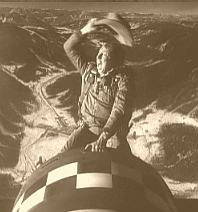permo
Well-Known Member
This is something I came across online. I found it a nice little read from a brewmaster in Australia
"06-22-2004, 03:03 AM
Guys and Girls,
Just a quick note on Candii sugar, and it's differences from that of normal table sugar (sucrose). Firstly making candii sugar is to understand what it is and how it is different from sucrose or normal sugar. Candii sugar is invert sugar, in that its constituents are broken down by "inversion", simply put, splitting its atoms (how cool does that sound?). To make invert sugar or candii sugar, you are basically making toffee, by heating a sugar syrup to a high tempreature with a bit of citric acid to help the inversion along. The sugar is processed to make candy sugar. And candy sugar has a number of effects on a beer. It has been caramelised, and this gives nice complex flavours, including a nice sweet edge, a distinct aroma, and most importantly, a dense mousse-like head that is so characteristic of Belgian beers.
So let's say you want to make 500 grams of candy sugar. You weigh 500 g of white sugar and into a small pot. Add enough water to make thick syrup. Add a pinch of citric acid (I will explain why later). Now bring to a boil and keep the temperature between hard ball and soft crack (127-135 °C). As evaporation will cause the temperature to rise, have a small amount of water and add a tablespoon every now and then.
The colour will gradually change from clear to light amber to deep red as the boil proceeds. Light candy sugar is a very light pee colour (yes, that type of pee). This can take only 15 minutes. Dark candy sugar is very deep red. This can take hours. Once you are at the colour you desire (and a lot of that is on taste), you let the temp go to hard crack (150 °C). Once it hits hard crack, turn off the heat and pour it into some greaseproof paper. As it cools it will go rock hard. I then put it in the freezer until I'm ready to use it.
Now why add citric acid? This is to 'invert' some of the sugar. Simply put, cane sugar (sucrose) is made up of two other sugars (glucose and fructose) joined together. Yeast must spend time and effort breaking the joining bonds to allow them to get at the simple sugars they need for metabolism. This can also be done chemically in an acid environment with heat. The citric acid supplies the acid, and the heat is there when you make the candy sugar. Invert sugar tastes a bit sweeter than regular sucrose."
here it is in it's original context, I found this especially usefull since I just made 8 pounds of candi sugars in different colors.....there is no doubt the dark amber will lend some awesome depth of flavor to my beers..
http://www.probrewer.com/vbulletin/archive/index.php/t-1677.html
"06-22-2004, 03:03 AM
Guys and Girls,
Just a quick note on Candii sugar, and it's differences from that of normal table sugar (sucrose). Firstly making candii sugar is to understand what it is and how it is different from sucrose or normal sugar. Candii sugar is invert sugar, in that its constituents are broken down by "inversion", simply put, splitting its atoms (how cool does that sound?). To make invert sugar or candii sugar, you are basically making toffee, by heating a sugar syrup to a high tempreature with a bit of citric acid to help the inversion along. The sugar is processed to make candy sugar. And candy sugar has a number of effects on a beer. It has been caramelised, and this gives nice complex flavours, including a nice sweet edge, a distinct aroma, and most importantly, a dense mousse-like head that is so characteristic of Belgian beers.
So let's say you want to make 500 grams of candy sugar. You weigh 500 g of white sugar and into a small pot. Add enough water to make thick syrup. Add a pinch of citric acid (I will explain why later). Now bring to a boil and keep the temperature between hard ball and soft crack (127-135 °C). As evaporation will cause the temperature to rise, have a small amount of water and add a tablespoon every now and then.
The colour will gradually change from clear to light amber to deep red as the boil proceeds. Light candy sugar is a very light pee colour (yes, that type of pee). This can take only 15 minutes. Dark candy sugar is very deep red. This can take hours. Once you are at the colour you desire (and a lot of that is on taste), you let the temp go to hard crack (150 °C). Once it hits hard crack, turn off the heat and pour it into some greaseproof paper. As it cools it will go rock hard. I then put it in the freezer until I'm ready to use it.
Now why add citric acid? This is to 'invert' some of the sugar. Simply put, cane sugar (sucrose) is made up of two other sugars (glucose and fructose) joined together. Yeast must spend time and effort breaking the joining bonds to allow them to get at the simple sugars they need for metabolism. This can also be done chemically in an acid environment with heat. The citric acid supplies the acid, and the heat is there when you make the candy sugar. Invert sugar tastes a bit sweeter than regular sucrose."
here it is in it's original context, I found this especially usefull since I just made 8 pounds of candi sugars in different colors.....there is no doubt the dark amber will lend some awesome depth of flavor to my beers..
http://www.probrewer.com/vbulletin/archive/index.php/t-1677.html




